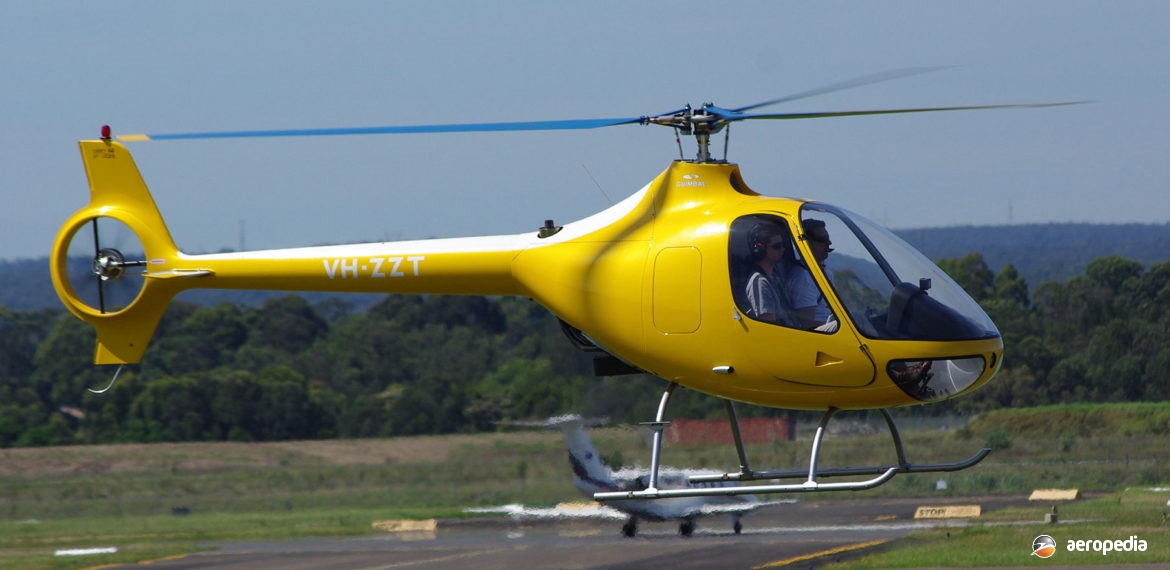Photograph:
Guimbal Capri G2 VH-ZZT (c/n 1020) at Bankstown, NSW in November 2011 (David C Eyre)
Country of origin:
France
Description:
Two-seat light helicopter
Power Plant:
One 108 kw (145 hp) Lycoming O-360-J2A four cylinder horizontally-opposed air-cooled engine
Specifications:
- Rotor diameter: 7.2 m (23 ft 7 in)
- Length: 6.31 m (20 ft 8 in)
- Height: 2.37 m (7 ft 9 in)
- Max speed: 185 km/h (115 mph)
- Cruising speed: 166 km/h (104 mph)
- Service ceiling: 3,963 m (13,000 ft)
- Range: 700 km (435 miles)
- Endurance: 5.8 hours
- Fuel capacity: 170 litres (37.4 Imp gals)
- Empty weight: 425 kg (937 lb)
- Useful load: 280 kg (617 lb)
- Baggage capacity: 40 kg (88 lb)
- Loaded weight: 700 kg (1,543 lb)
History:
The Guimbal Cabri was a small, two-seat, light helicopter, the production prototype of which (F-WYHG) was flown in March 2005, certification in Europe being obtained in December 2007. Designed by Bruno Guimbal, an engineer with Eurocopter, and built in France by Helicopteres Guimbal, it was aimed at the training and sport helicopter market. It has a Fenestron anti-torque system replacing a conventional tail rotor design, this reducing the noise of the unit, and reducing risk if the tail rotor struck the ground. It had a three-blade fully-articulated main rotor similar to that of the Eurocopter EC-120. The first two airframes were for testing purposes.
Design of the machine began in Aix-en-Provence in the 1980s, the prototype (F-PILA) flying for the first time on 11 April 1992 at Marseille-Marignane powered by a 112 kw (150 hp) Lycoming O-320 engine, and being used for establishing some class records. It was then re-designed to meet new crashworthiness regulations and was fitted with a Lycoming O-360 engine which was de-rated. In this configuration it was first flown on 31 March 2005. First customer deliveries were to iXair Helicopter flying school and by June 2010 ten had been delivered, production being one machine a month. Dual controls were standard.
In 2010 the Australian distributor, Helicopter Transport and Training of Bankstown, NSW announced it would receive its first machine late in 2010. This machine duly arrived and became VH-ZZT (c/n 1020) in March 2011, being followed by VH-CDU (c/n 018) for Ross Kelly of Orangeville, NSW during the same month.
First two examples registered in New Zealand in September 2011 became ZK-HCS (c/n 1024) registered to CHL Investments of Christchurch; and ZK-IDC (c/n 1025) registered to Mahi Helicopters of Christchurch.
The type has proved popular in this part of the world for training work and by late October 2015 21 examples had been imported and registered in New Zealand.

